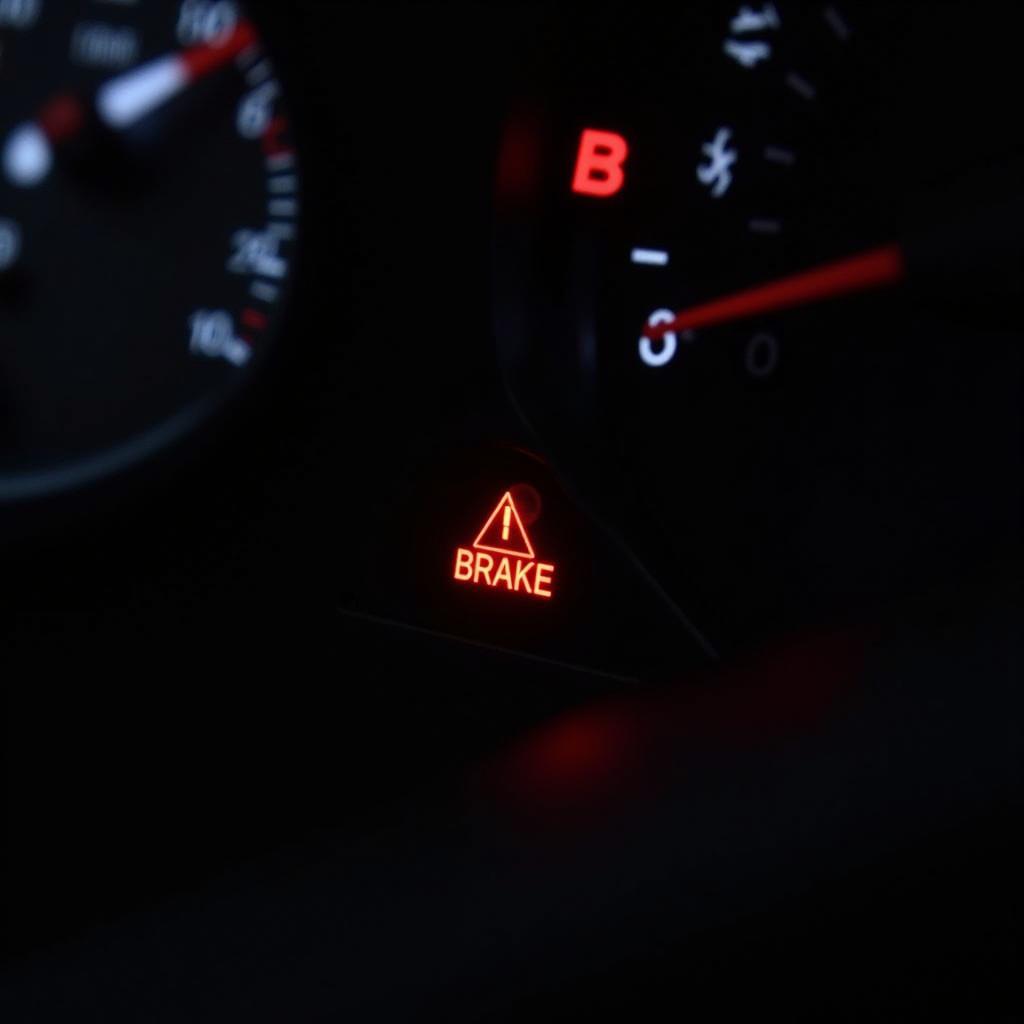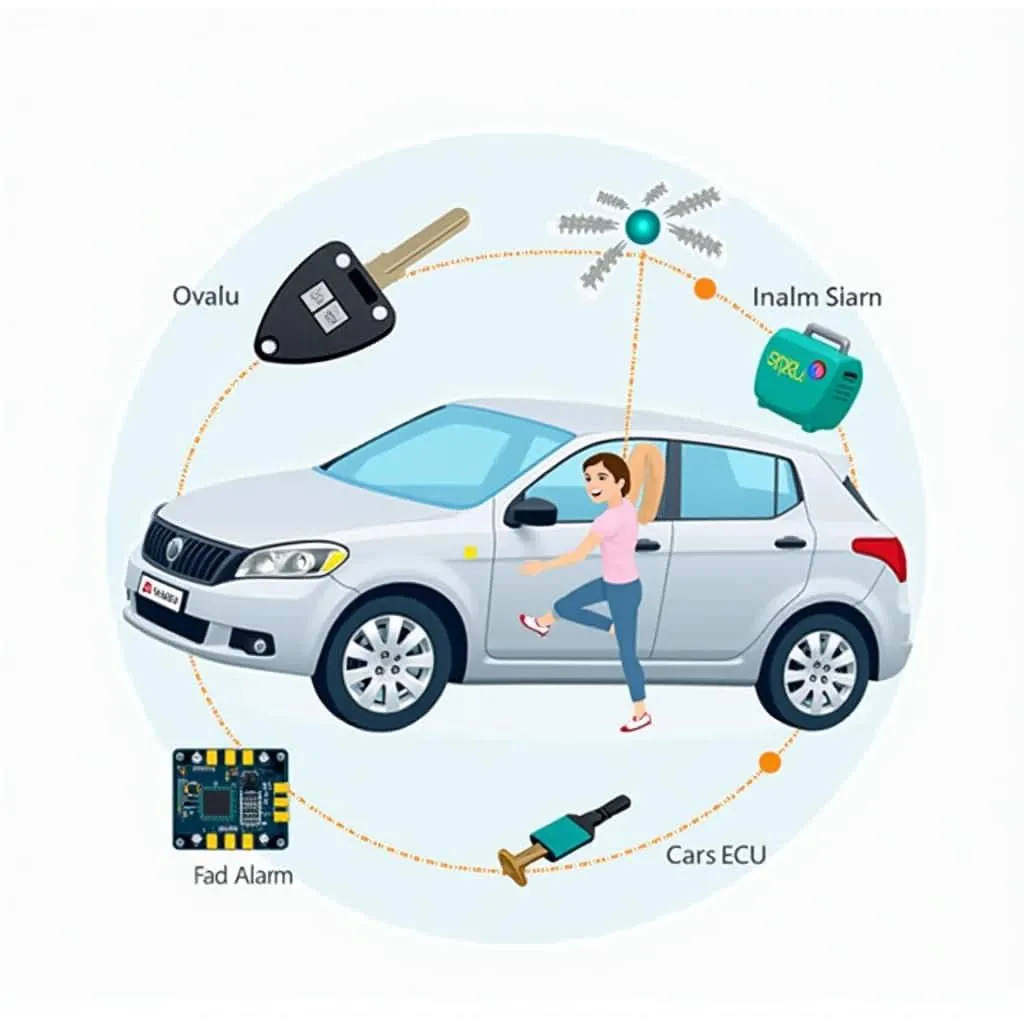The Warner clutch brake control system is a critical component in many industrial and automotive applications, ensuring smooth operation and reliable braking. However, like any mechanical and electronic system, it can encounter problems that require troubleshooting. This guide is designed to help you identify, diagnose, and potentially fix common issues you might face with your Warner clutch brake control.
Understanding Your Warner Clutch Brake Control System
Before diving into troubleshooting, it’s essential to have a basic understanding of how your clutch brake control system works. While specific components and configurations may vary depending on your vehicle or machinery, the core principles remain consistent.
A Warner clutch brake control system typically comprises:
- Clutch Brake Control Unit: This electronic unit acts as the brain of the system, receiving signals from various sensors and controlling the clutch and brake engagement.
- Clutch Actuator: This component, often electrically controlled, physically engages and disengages the clutch based on signals from the control unit.
- Brake Actuator: Similar to the clutch actuator, this component controls the brake application, ensuring smooth and controlled braking.
- Sensors: Various sensors, such as speed sensors, position sensors, and pressure sensors, provide crucial data to the control unit, allowing it to make informed decisions about clutch and brake engagement.
Common Warner Clutch Brake Control Problems and Solutions
Now, let’s delve into some common problems you might experience with your Warner clutch brake control system and how to address them:
1. Clutch Slipping
Symptoms: You might notice the engine revving up without a corresponding increase in vehicle speed, a burning smell coming from the clutch area, or difficulty shifting gears.
Possible Causes:
- Worn-out clutch disc
- Leaking hydraulic lines
- Malfunctioning clutch actuator
Troubleshooting Steps:
- Check the clutch fluid: Ensure the clutch fluid reservoir is full and there are no visible leaks.
- Inspect the clutch actuator: Look for any signs of damage or leaks. If the actuator is malfunctioning, it might need to be replaced.
- Consider clutch disc replacement: A worn clutch disc requires professional replacement.
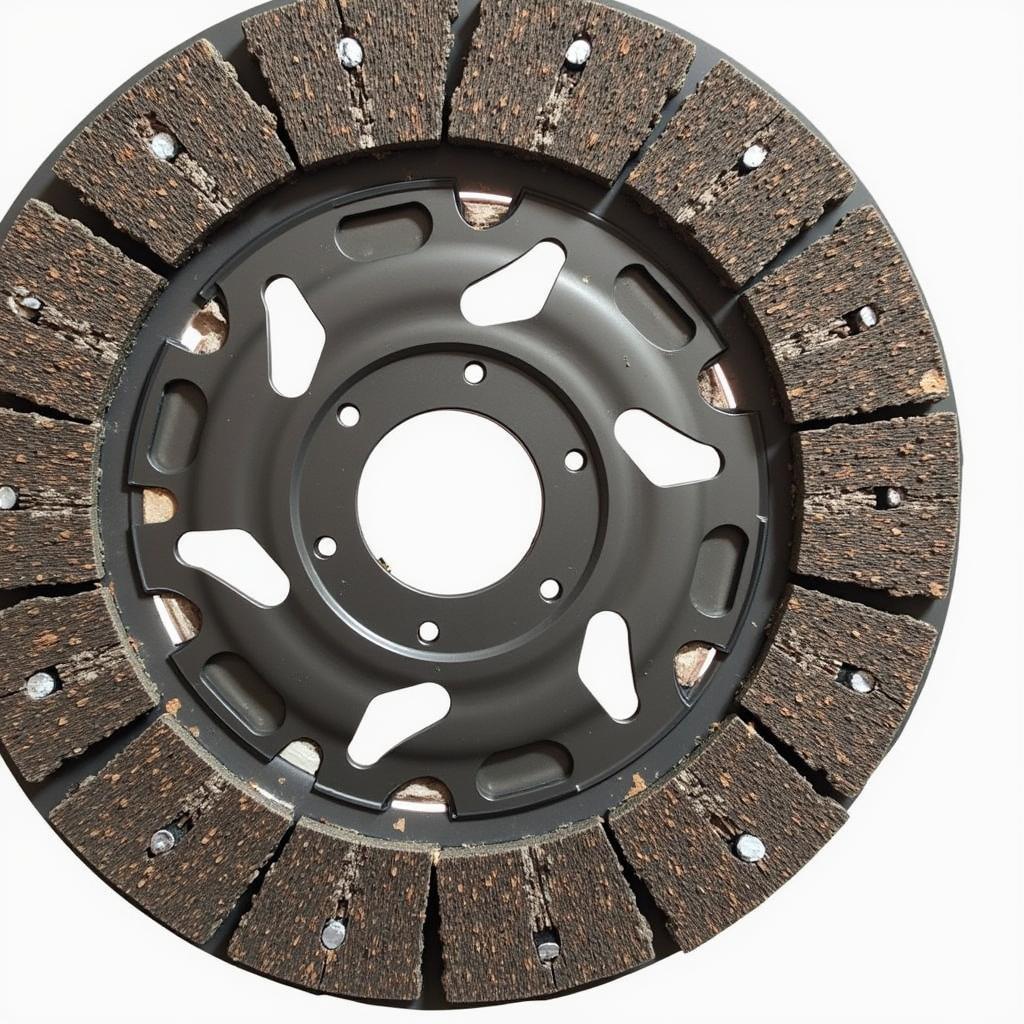 Worn Clutch Disc Illustration
Worn Clutch Disc Illustration
2. Brake Drag
Symptoms: You might experience reduced fuel efficiency, unusual heat emanating from the brakes, or a dragging sensation while driving.
Possible Causes:
- Seized brake caliper pistons
- Malfunctioning brake actuator
- Problems with the brake control unit
Troubleshooting Steps:
- Inspect the brake calipers: Check for signs of rust, corrosion, or sticking pistons.
- Test the brake actuator: Ensure it releases the brakes completely when disengaged.
- Scan for Diagnostic Trouble Codes (DTCs): Use a compatible diagnostic scanner to check for any stored codes in the brake control unit, which can pinpoint the issue.
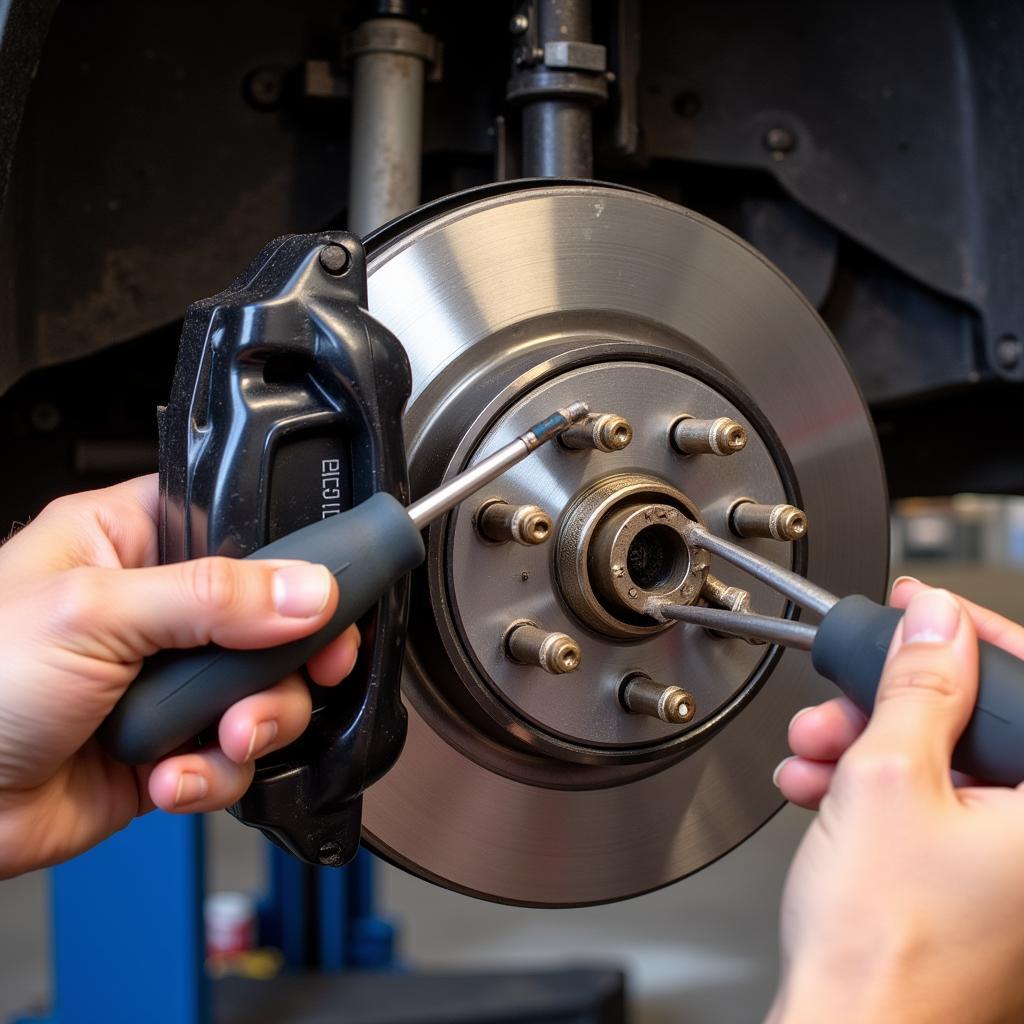 Brake Caliper Inspection
Brake Caliper Inspection
3. Erratic Clutch Engagement
Symptoms: You might experience jerky starts, rough shifts, or the clutch engaging unexpectedly.
Possible Causes:
- Faulty sensors (speed, position, or pressure sensors)
- Wiring issues between the control unit and actuators
- Software glitches in the control unit
Troubleshooting Steps:
- Check sensor readings: Use a diagnostic scanner to monitor sensor data and ensure they are within specifications.
- Inspect wiring harnesses: Examine the wiring harnesses connecting the control unit, actuators, and sensors for any signs of damage, loose connections, or corrosion.
- Update or reinstall control unit software: Consult your vehicle or equipment manufacturer for the latest software updates or consider a software reinstall.
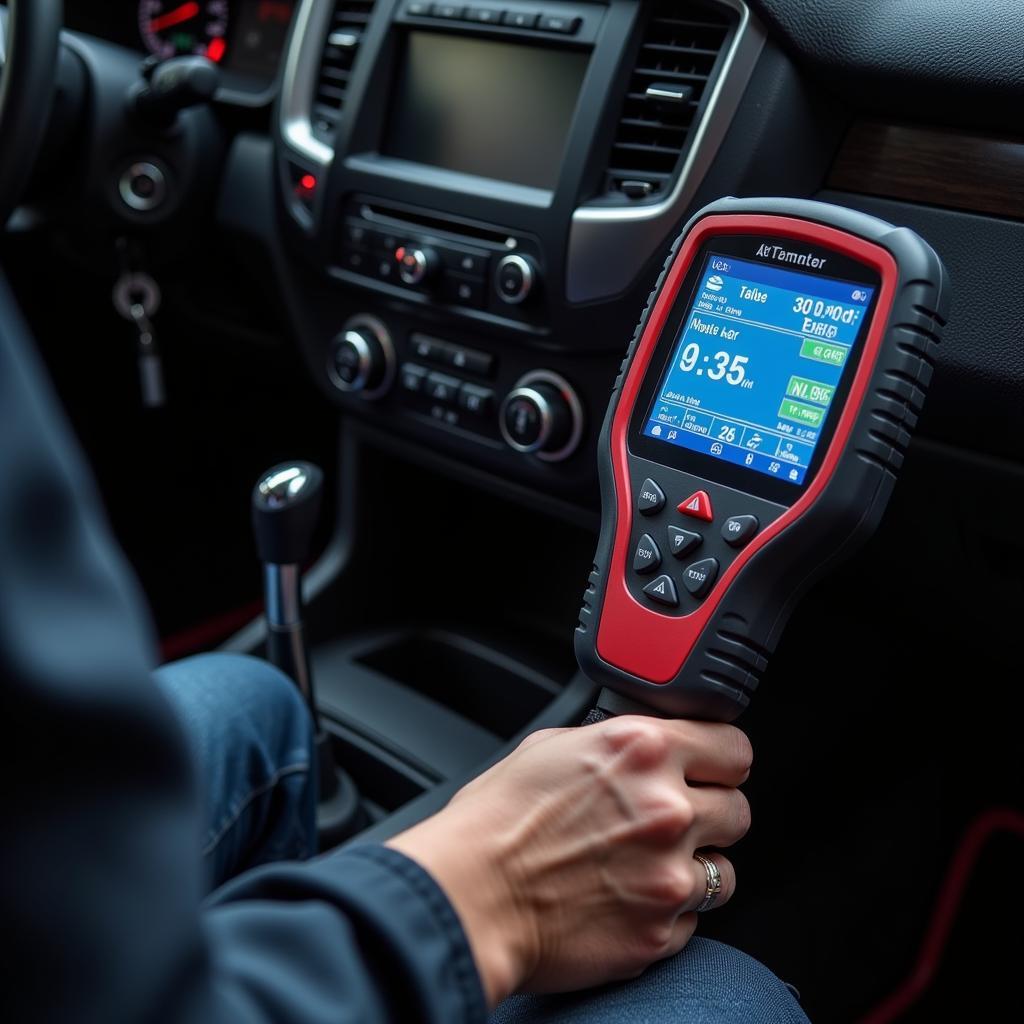 Using a Diagnostic Scanner
Using a Diagnostic Scanner
When to Seek Professional Help
While this guide provides basic troubleshooting steps, some Warner clutch brake control issues require professional expertise and specialized tools. If you encounter complex problems or are uncomfortable performing the steps outlined, it’s crucial to seek help from a qualified automotive or industrial machinery technician. They possess the knowledge and equipment necessary to diagnose and repair your system safely and effectively.
Maintaining Your Warner Clutch Brake Control System
Prevention is always better than cure. Here are some maintenance tips to ensure the longevity and optimal performance of your Warner clutch brake control system:
- Regular Fluid Checks and Changes: Just like engine oil, clutch and brake fluids require regular checks and replacement as per your vehicle or equipment manufacturer’s recommendations.
- Inspect for Leaks: Periodically inspect all hydraulic lines, connections, and components for signs of leaks. Address any leaks promptly to prevent further damage.
- Keep Components Clean: Dirt, grime, and debris can interfere with the proper functioning of sensors and actuators. Keep these components clean and free from obstructions.
Conclusion
Your Warner clutch brake control system plays a vital role in ensuring your vehicle or machinery operates safely and efficiently. By understanding its components, common problems, and basic troubleshooting steps, you can address minor issues and know when to seek professional help. Remember, regular maintenance is key to preventing costly repairs and extending the lifespan of your clutch brake control system.

